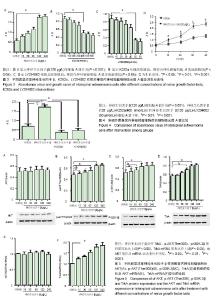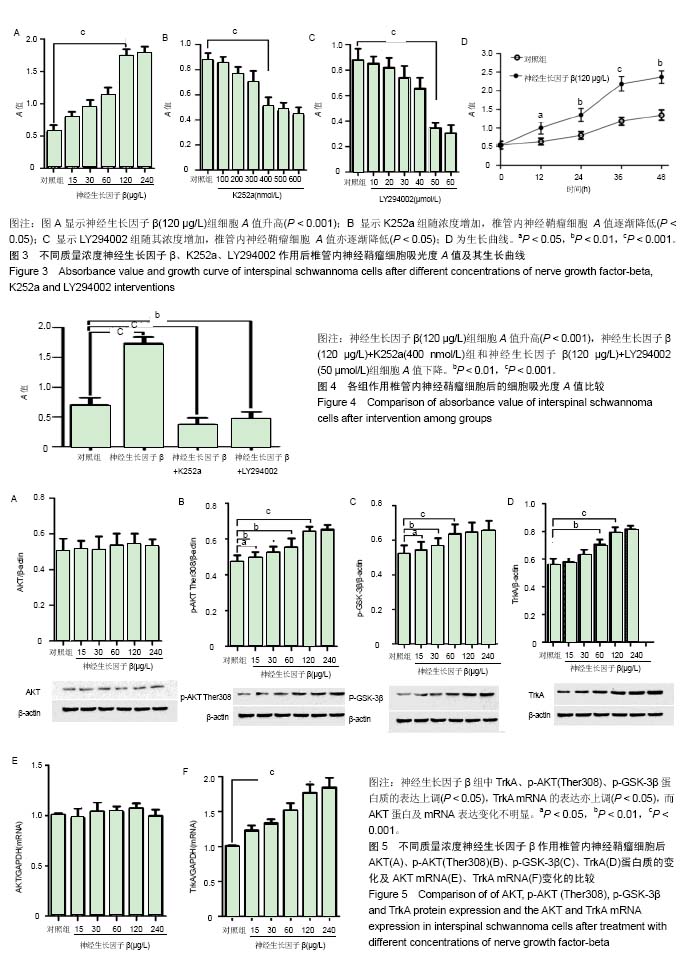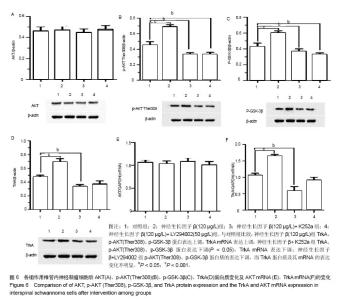| [1] Sakai Y, Hirose T, Tomono A, et al. Angiosarcoma arising in schwannoma of cerebellopontine angle and later associating with meningioma in a patient with neurofibromatosis type 2. Brain Tumor Pathol. 2014;31(4):293-298.[2] Verma A, Banerjee K, Verma A, et al. Maxillary neurilemmoma- Rarest of the rare tumour: Report of 2 cases. Int J Surg Case Rep.2013;4(11): 1044-1047.[3] 李嘉瑶, 戚基萍. 459例神经鞘瘤多发部位临床分析[J]. 中国初级卫生保健, 2014,28(01):120-121.[4] Suchomel P,Jurak L,Antinheimo J,et al.Does sagittal position of the CTDR-related centre of rotation influence functional outcome? Prospective 2-year follow-up analysis. Eur Spine J.2014;23(5): 1124-1134.[5] 王献印. 颈椎管内肿瘤的外科治疗: 濮阳市首届学术年会, 中国河南濮阳, 2006[C].[6] 黄建华,张明贵,高伟,等.椎管内肿瘤13例诊治分析[J].临床骨科杂志, 2000,3(4):271-272.[7] 刘树义, 陈实, 张开创, 等. 椎管内神经鞘瘤NF2基因的突变分析[J].中华医学遗传学杂志, 2017,34(5):637-641.[8] Sudhakar D, Nelson L, Herrera L. Chest wall malignant peripheral nerve sheath tumor in a 21-year old female. Asian Cardiovasc Thorac Ann.2015;23(2):227-228.[9] Jacoby LB, MacCollin M, Louis DN, et al. Exon scanning for mutation of the NF2 gene in schwannomas. Hum Mol Genet.1994; 3(3):413-419.[10] Hondermarck H.Neurotrophins and their receptors in breast cancer. Cytokine Growth Factor Rev.2012;23(6):357-365.[11] Ruggeri P, Farina AR, Di Ianni N, et al.The TrkAIII oncoprotein inhibits mitochondrial free radical ROS-induced death of SH-SY5Y neuroblastoma cells by augmenting SOD2 expression and activity at the mitochondria, within the context of a tumour stem cell-like phenotype. PLoS One.2014;9(4):e94568.[12] Yu X, Liu Z, Hou R, et al. Nerve growth factor and its receptors on onset and diagnosis of ovarian cancer. Oncol Lett. 2017;14(3): 2864-2868.[13] Heinen TE, Dos SR, Da RA, et al. Trk inhibition reduces cell proliferation and potentiates the effects of chemotherapeutic agents in Ewing sarcoma. Oncotarget.2016;7(23):34860-34880.[14] 梁家宏,郑周红,尹朝晖.神经生长因子及受体在结直肠肿瘤中的表达及临床意义[J].当代医学, 2013,19(28):1-3.[15] Zhang KC,Chen S, Lin J, et al. Primary Culture of Human Interspinal Schwannoma. J Biomat Tissue Eng.2016;6(4):263-269.[16] Levi-Montalcini R. The nerve growth factor: thirty-five years later. Biosci Rep.1987;7(9):681-699.[17] Aloe L, Chaldakov GN. The multiple life of nerve growth factor: tribute to rita levi-montalcini (1909-2012). Balkan Med J.2013; 30(1):4-7.[18] Yajima I,Kumasaka MY,Thang ND,et al. RAS/RAF/MEK/ERK and PI3K/PTEN/AKT Signaling in Malignant Melanoma Progression and Therapy. Dermatol Res Pract.2012;2012:354191.[19] Testa JR,Bellacosa A.AKT plays a central role in tumorigenesis. Proc Natl Acad Sci U S A. 2001;98(20):10983-10985.[20] Descamps S, Pawlowski V, Revillion F, et al. Expression of nerve growth factor receptors and their prognostic value in human breast cancer. Cancer Res.2001;61(11):4337-4340.[21] Rende M, Rambotti MG, Stabile AM, et al.Novel localization of low affinity NGF receptor (p75) in the stroma of prostate cancer and possible implication in neoplastic invasion: an immunohistochemical and ultracytochemical study. Prostate. 2010;70(5):555-561.[22] Vivanco I,Sawyers CL.The phosphatidylinositol 3-Kinase AKT pathway in human cancer.Nat Rev Cancer. 2002;2(7):489-501.[23] Stegeman H,Span PN, Kaanders JH,et al. Improving chemoradiation efficacy by PI3-K/AKT inhibition. Cancer Treat Rev. 2014;40(10):1182-1191.[24] Li B,Cai S,Zhao Y,et al.Nerve growth factor modulates the tumor cells migration in ovarian cancer through the WNT/beta-catenin pathway. Oncotarget.2016;7(49):81026-81048.[25] 高春英,刘金钰,李慧.神经生长因子及其受体TrkA在卵巢癌中的作用[J].中国妇幼保健, 2015,30(8):1310-1312.[26] Meco D,Di Francesco AM, Melotti L,et al. Ectopic nerve growth factor prevents proliferation in glioma cells by senescence induction. J Cell Physiol. 2018 Nov 11. [27] 张靖,马虎,韩静,等. ABCG2在非小细胞肺癌厄洛替尼耐药中的作用[J].第三军医大学学报, 2014,36(10):987-991.[28] 吴海峰,李猛,高裕,等.PI3K抑制剂LY294002对人膀胱尿路上皮癌细胞增殖与凋亡的影响[J].宁夏医学杂志, 2016,38(1):4-6.[29] 黄轶群,马旭东.LY294002对套细胞淋巴瘤增殖、凋亡及Notch1信号通路的影响[J].华中科技大学学报(医学版), 2015,44(2):156-159.[30] 耿英华,武文娟,于北凯,等.LY294002靶向抑制PI3K/Akt信号通路干预K562细胞增殖的研究[J].安徽医科大学学报, 2014,49(3): 295-299.[31] 石雪萍,李静,冉建华,等.人参皂苷Rh2调控PI3K/AKT/GSK-3β信号通路诱导人结肠癌细胞凋亡[J].中国药理学通报, 2017,33(1): 114-119.[32] 陈普建,熊二梦,张严,等.DAPT与K252a联用体外抑制人脑胶质瘤U251MG细胞的生长[J].江苏医药, 2014,40(15):1746-1749. |



